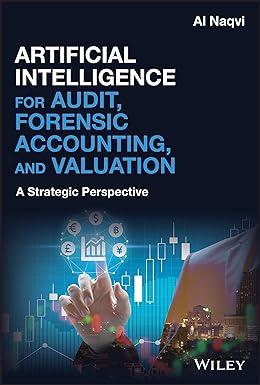Question
Hey Chegg, I need with 2 questions. Case Problem Walton Medical Laboratory Margaret Walton spent 10 years working in the laboratory at City Hospital. During
Hey Chegg, I need with 2 questions.
Case Problem
Walton Medical Laboratory
Margaret Walton spent 10 years working in the laboratory at City Hospital. During that time, she advanced to the position of director of the laboratory and completed an MBA degree. She felt that opportunities for further advancement at the hospital were limited and was looking for a new challenge. She took a course in entrepreneurship and was fascinated by the idea of starting her own business. Walton decided that she would open an independent laboratory to provide medical tests for independent medical practices. She believed that she could help physicians reduce both their capital requirements and administrative chores, as well as provide more accurate testing. Walton began assembling information. She discovered a piece of land available near a number of independent medical practices. The land could be purchased for $100,000, and a suitable building would cost approximately $400,000. The building would have a useful life of approximately 40 years. Laboratory equipment would cost $1 million. The equipment would have a life of 7 years for tax purposes, but would actually last 10 years. Although the business could continue indefinitely, Walton wanted to do the analysis based on the assumption of a life similar to that of the laboratory equipment: 10 years. In addition to fixed assets, working capital such as cash, supplies, receivables, and payables would be needed. Walton wanted to maintain a minimum cash balance of $20,000 within a month of starting the business. She estimated initial accounts payable at $40,000. She estimated that the cash, supplies, receivables, and payables categories would double at the end of the first year and would not increase thereafter. Walton predicted revenue of $600,000 during the first year and $1,200,000 each year thereafter. She estimated that labor expenses, including a salary for her equal to what she was now earning, of $300,000 in the first year and $480,000 each year thereafter. She estimated a supplies expense of $120,000 in the first year and $190,000 each year thereafter. She estimated overhead expense, other than depreciation, of $100,000 a year. Looking ahead, Walton estimated that the equipment would have a negligible value in 10 years, while the building would have lost one-fourth of its value and the land would still be worth $100,000. She guessed that supplies inventory could be sold for half its cost, and other working capital items would be settled at their book values. Walton turned her attention to financing. She had limited capital of her own and would need to seek outside investors. She had heard enough horror stories about problems that occurred when companies could not make payments on debts and she wanted to avoid those troubles. Thus, she wanted to try to arrange all equity financing, and use a bank line of credit only for temporary needs. Walton decided on a plan involving ten wealthy investors, preferably senior retired physicians who would then serve on the board of directors. She would fund the project by creating eleven shares - one share free to herself as a founder's share and one share to each of the investors. Each investor would then invest 10 percent of the capital requirements. Walton tentatively discussed the project with several senior retired physicians to see what would be required. They viewed this as an investment of moderate risk and indicated that they would want a 12 percent after tax return from an investment of this type. While several investors encouraged her to continue, they were naturally unwilling to make a commitment without a proposal and a thorough financial analysis. Walton began to develop a profitability analysis and a proposal. She had to choose between the corporate tax form and an S form. She estimated that most investors would be in 28 percent tax brackets. All funds not needed internally would be paid out to the shareholders. She thought she could be ready to start by the first of the year, so assets would be considered placed in service in January.
Case Questions:
1. Identify all cash flows on the assumption the business is taxed at a 28 percent tax rate.
2. Prepare a net present value.
Please answer both questions and show work and explain throughly for each question, if neccessary.
Step by Step Solution
There are 3 Steps involved in it
Step: 1

Get Instant Access to Expert-Tailored Solutions
See step-by-step solutions with expert insights and AI powered tools for academic success
Step: 2

Step: 3

Ace Your Homework with AI
Get the answers you need in no time with our AI-driven, step-by-step assistance
Get Started


